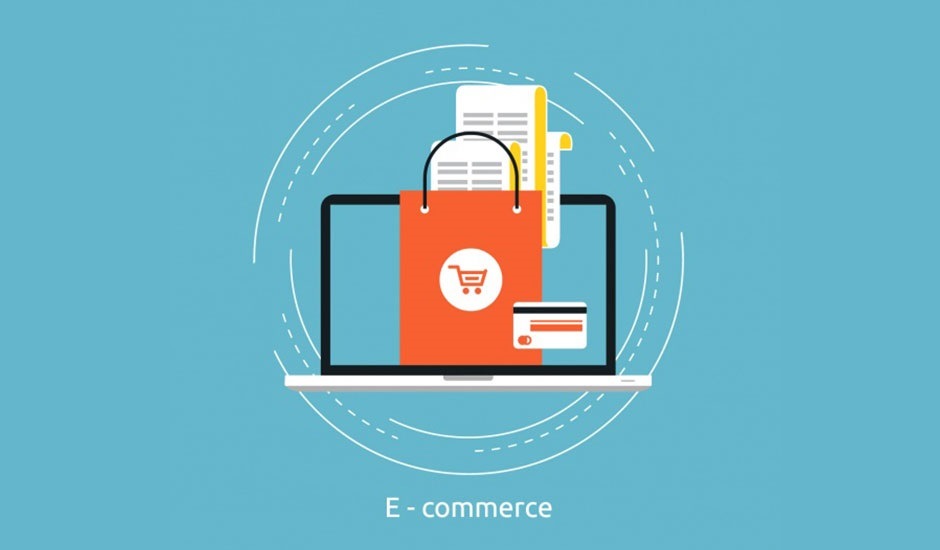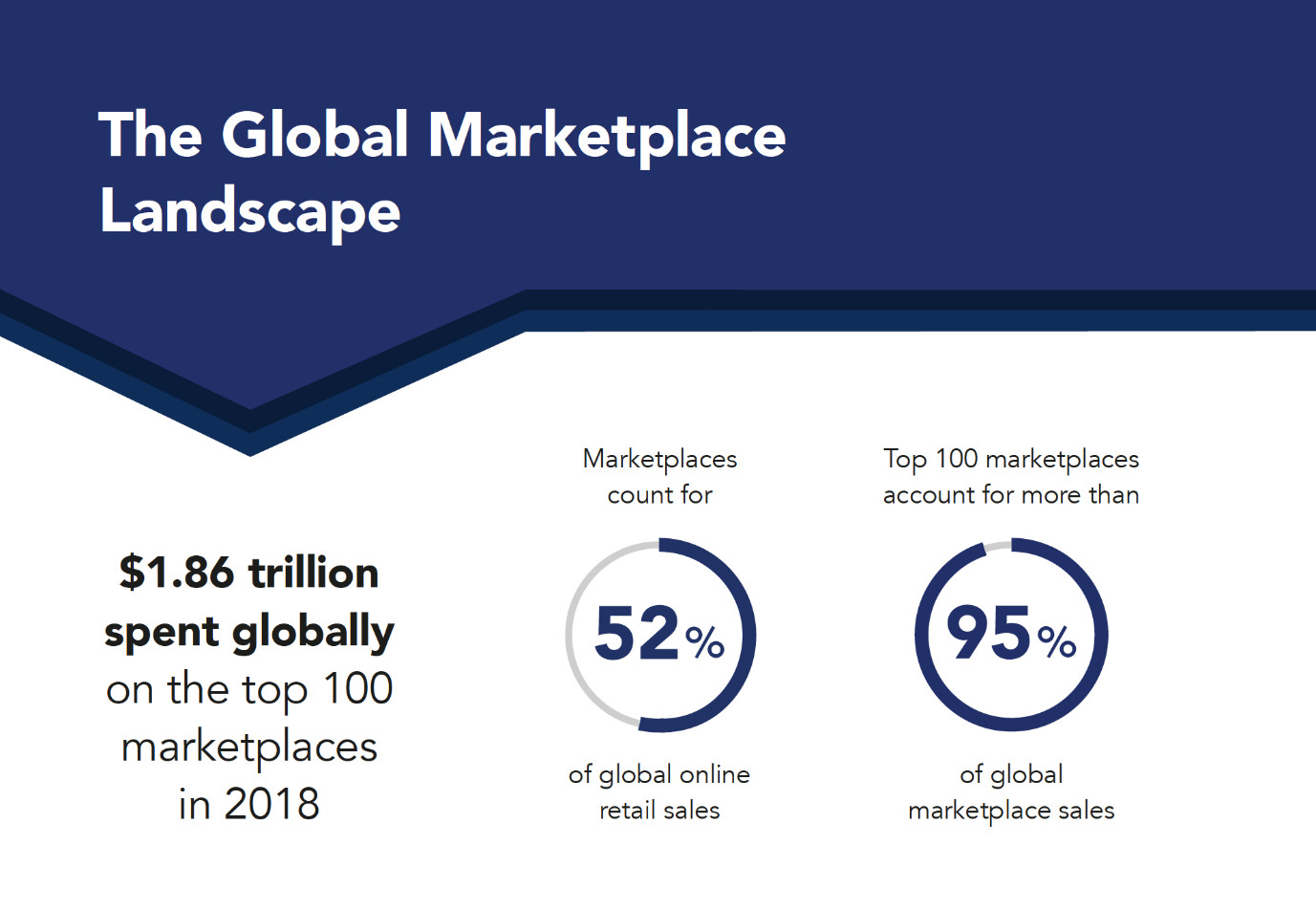The Dangers of eCommerce Brands relying on large marketplaces’
Written by
Editorial TeamPublished on

The Changing Landscape of Online Marketplaces
The use of large online marketplaces has long been a key part of businesses’ online growth. It is no wonder too, considering marketplaces are generally a quick, low cost and low-risk option for many companies to widen their customer base, test new markets and broaden international sales.
The wide reach of large marketplaces such as Amazon or eBay means they are often the first stop for businesses who are beginning to reach out into the world of eCommerce.
The result of this is that many businesses are now facing a situation where a large proportion of their online sales are restricted to one online marketplace, and usually the larger ones.
Whilst this can bring successes, competition is incredibly high, and marketplaces are becoming more demanding of what they expect from sellers. Relying on just one marketplace for all your sales is also a major risk – if anything goes wrong with that sales channel, businesses could see their sales plummet.
To successfully sell through marketplaces, retailers must look beyond the big players and diversify the channels they use. This not only will help build sales but also spread the potential risk. There is no denying that the global marketplace landscape is huge, and that opportunity goes beyond just Amazon.

Marching to Amazon’s Drum
When selling on large marketplaces, there is usually a long list of policies that sellers have to adhere to. Not only can they be complicated to implement, but the seller can end up penalised if they miss something or if the rules change and they are no longer compliant.
Sellers have been known to have their shops taken down, with a long and complicated process to reinstate their account. Commissions can be high and rampant competition can force sellers to reduce their prices below what is profitable.
Whilst these large retailers offer an opportunity for retailers, they also hold all the cards and, in the end, the house always wins. Looking beyond Amazon is important so that retailers don’t get pushed out if anything goes wrong, even if they are not at fault.
It gives you little control over your customer relationships. Although there is a potentially high reward, there is always high risk. Expanding your sales into more marketplaces further helps retailers not fall into this trap of relying on one marketplace.
Diversification is key to growing sales and spreading the risk.
The top 100 marketplaces account for more than 95% of global marketplace sales, so tapping into these marketplaces is a key factor in growing your eCommerce brand.
Where retailers can often go straight to Amazon, as the largest marketplace in the world, in fact, the choice of marketplaces is not limited.
Alternative marketplaces offer different audiences, demographics, products and approaches – and the presence of these marketplaces is growing.
‘OnBuy.com’ is just one example of an alternative marketplace offering a range of different products from fashion and electrics to garden products and homeware.
Despite having only launched in 2016, they already have 1 million monthly visits to their site, over 12 million products and a growth rate of 1300%. *
Not only are their new marketplaces popping up and offering new opportunities, but globally there are country-specific marketplaces that open a door into one particular country or continent.
For example, for German sellers, there is a multitude of marketplaces that are popular to their customers.
Zalando is the largest fashion retailer in Germany, with 100 million unique monthly visitors, and fashion and lifestyle marketplace OTTO is the second largest marketplace after Amazon.
For Handmade products, DeWanda offers sellers a similar customer profile as Etsy, or for a wider range of products such as electronics, clothing, accessories and DIY, Real.de is one of the leading sites for German retailers.
Depending on what products you want to sell, or what country you want to sell in, there is an opportunity and an audience ready and waiting.
Businesses are increasingly able to take a more considered approach based on what the individual marketplace offers. In turn, they get far more scope for reaching a wider international audience, as well as spreading the risk associated with focusing on one channel.

Standing Out – Delivery & Returns Helps Craft Great Customer Experience and Grow Sales
Another potential danger of selling on larger marketplaces is that competition is incredibly high.
Not only are you competing against other retailers, but you could be competing against your own suppliers too.
In addition, some online marketplaces are now offering their own lines of products, meaning there are more ways than ever in which your business can miss out on sales.
For some businesses, the solution would be to compete on price – but this can easily become a dangerous route considering the level of competition.
Perpetually cutting costs can quickly lead to unstable margins, which could push your business into a precarious position.
This means that many businesses prefer to adopt a key benefit or unique online marketplace selling point, thus setting them aside from the competition.
It is very clear that customers are demanding more efficient delivery services. However, when selling on Amazon, retailers can get bogged down by demand to offer fast and free to compete with Amazon Prime.
With commissions on the site already high, meeting the demand for free delivery can further cut into profit margins.
However, customers want a variety of options, including next day, nominated day and time, and click and collect so that they can get their parcel via the most convenient route or time for them.
With 41% of customers abandoning their shopping cart due to lack of convenient shipping options, your delivery and returns services could play a vital role in competing with other sellers.
Returns processes also play a vital role. Due to the returns culture in German, a focus on returns is especially important for German sellers, with 70% of fashion orders being returned.
Offering a competition-beating delivery and returns service will not only ensure that your customers are more likely to purchase in the first place but will make it more likely to ensure they buy again in the future.

Delivery and returns services can easily be neglected in the midst of identifying and accessing marketplaces that fit your customer, products and brand – which is a big challenge in itself.
This is where enlisting the services of a multi-carrier partner to take care of your delivery and returns services on your behalf could be one way to allow you the free time to be able to continue to grow your eCommerce strategy.
They will help you take back control of your delivery service and ensure that your products arrive when your customers expect them to be.
Communication is also key when it comes to delivery, particularly from the point of view of the customer as it helps reassure them that their parcel is on the way.
This is another area where enlisting the services of a multi-carrier such as GFS could be a real help as they will maintain constant contact with your carrier partners on your behalf – giving you and your customers peace of mind.
Happy Customers & Happy Marketplaces

Customer reviews are a vital factor for success when selling on marketplaces. Sellers can live or die by customers reviews as many customers check them before deciding on a purchase.
Good and bad reviews can mean the difference between a customer buying from you or a direct competitor, and so directly affect your sales growth. Keeping your customers happy not only helps you with your sales, but it also keeps you in favour of the marketplace, meaning you are more likely to be pro-actively supported by them.
In larger marketplaces, sellers can also become liable for expensive penalties if your reviews do not meet the standards required by the marketplace. One of the biggest pitfalls for sellers and the most common area of complaint is around delivery and returns.
Focusing your efforts on your delivery strategy early on could be very beneficial, as fulfilling your shipping promises is a win-win for both the customer and your relationship with the marketplace.
Protecting Your Brand
An unavoidable factor of using online marketplaces is having less control over your own brand experience.
This can be challenging for businesses as it means that, not only are they more dependent on the marketplaces’ service terms, but their customers will expect that they are served in line with those policies also.
This is why diversifying your online strategy doesn’t stop at marketplaces, and it is important not to neglect other areas. Using online marketplaces is a crucial step towards growing your presence online, but it is important not to neglect your own website.
It is the home of your brand, after all, so ensuring it continues to get the care it deserves is key.
Marketplaces – Weighing the Pro’s and Cons
Online marketplaces are clearly a key growth opportunity for brands, counting for 52% of global online sales, and retailers see them as a quick and low-cost solution to selling online.
However, making larger retailers like Amazon your first and only port of call is a risk, despite their huge reach. Restricting your sales to one large marketplace for the majority of sales can leave retailers vulnerable if something happens to limit your selling – from not meeting the guidelines to not having the right customer reviews.
To make a success of selling through marketplaces, retailers must diversify and sell across different marketplaces, and identify the growing opportunities within different countries.
There are potentially bigger sales and profits to be made with smaller, niche marketplaces where competition is not as fierce and rules not as strict. Only by doing this can retailers spread the risk, expand sales and build a loyal customer base across the world.

Author:
Bobbie Ttooulis, Executive Director at GFS


